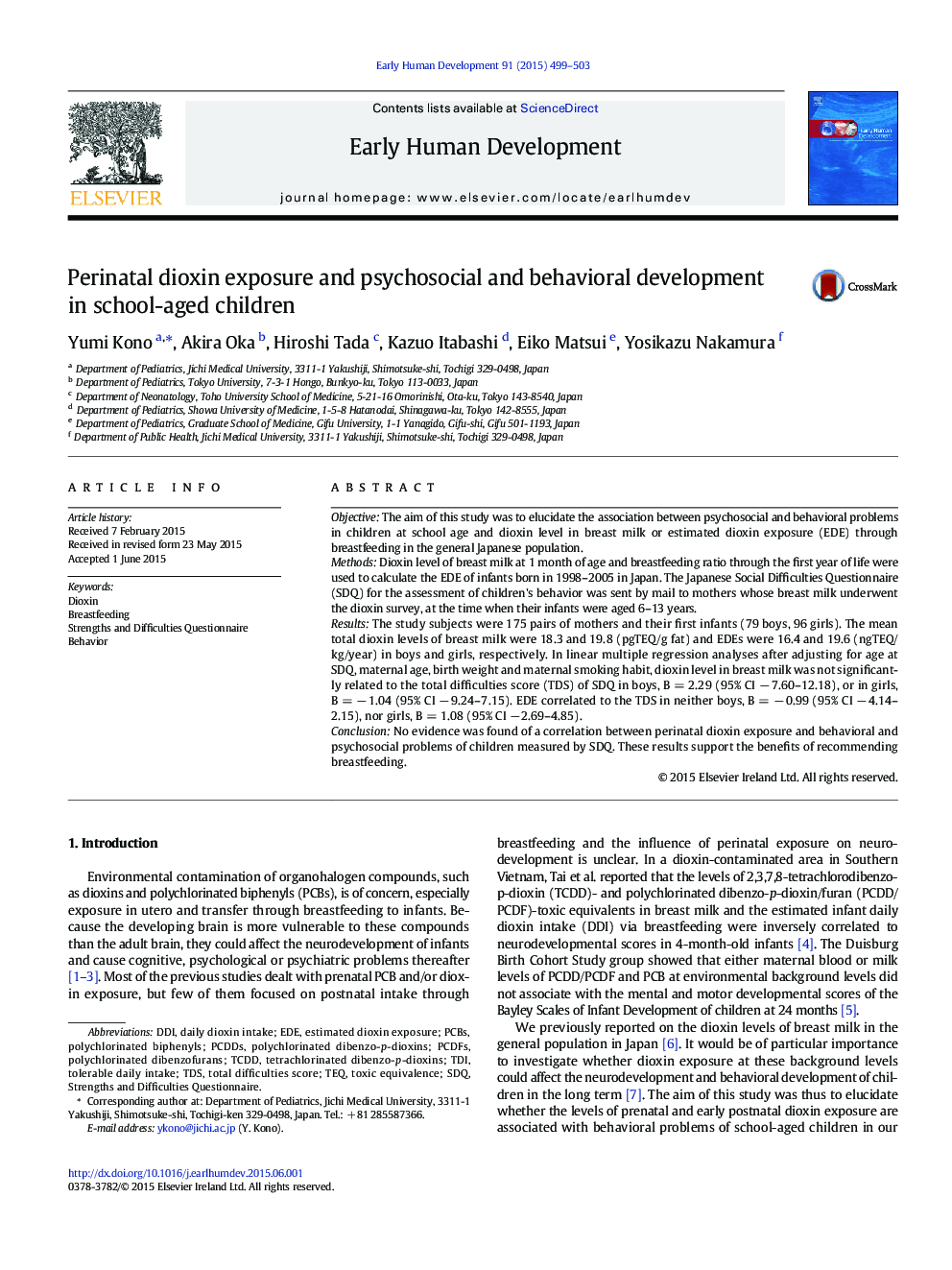| Article ID | Journal | Published Year | Pages | File Type |
|---|---|---|---|---|
| 3916388 | Early Human Development | 2015 | 5 Pages |
•We evaluated the association between perinatal dioxin exposure and behavioral problems in children.•Children's behavior was measured using the Japanese Social Difficulties Questionnaire (SDQ).•Dioxin level in breast milk was not significantly related to TDS of SDQ in boys or in girls.•Estimated dioxin exposure through breastfeeding correlated to TDS in neither boys nor girls.
ObjectiveThe aim of this study was to elucidate the association between psychosocial and behavioral problems in children at school age and dioxin level in breast milk or estimated dioxin exposure (EDE) through breastfeeding in the general Japanese population.MethodsDioxin level of breast milk at 1 month of age and breastfeeding ratio through the first year of life were used to calculate the EDE of infants born in 1998–2005 in Japan. The Japanese Social Difficulties Questionnaire (SDQ) for the assessment of children's behavior was sent by mail to mothers whose breast milk underwent the dioxin survey, at the time when their infants were aged 6–13 years.ResultsThe study subjects were 175 pairs of mothers and their first infants (79 boys, 96 girls). The mean total dioxin levels of breast milk were 18.3 and 19.8 (pgTEQ/g fat) and EDEs were 16.4 and 19.6 (ngTEQ/kg/year) in boys and girls, respectively. In linear multiple regression analyses after adjusting for age at SDQ, maternal age, birth weight and maternal smoking habit, dioxin level in breast milk was not significantly related to the total difficulties score (TDS) of SDQ in boys, B = 2.29 (95% CI − 7.60–12.18), or in girls, B = − 1.04 (95% CI − 9.24–7.15). EDE correlated to the TDS in neither boys, B = − 0.99 (95% CI − 4.14–2.15), nor girls, B = 1.08 (95% CI − 2.69–4.85).ConclusionNo evidence was found of a correlation between perinatal dioxin exposure and behavioral and psychosocial problems of children measured by SDQ. These results support the benefits of recommending breastfeeding.
